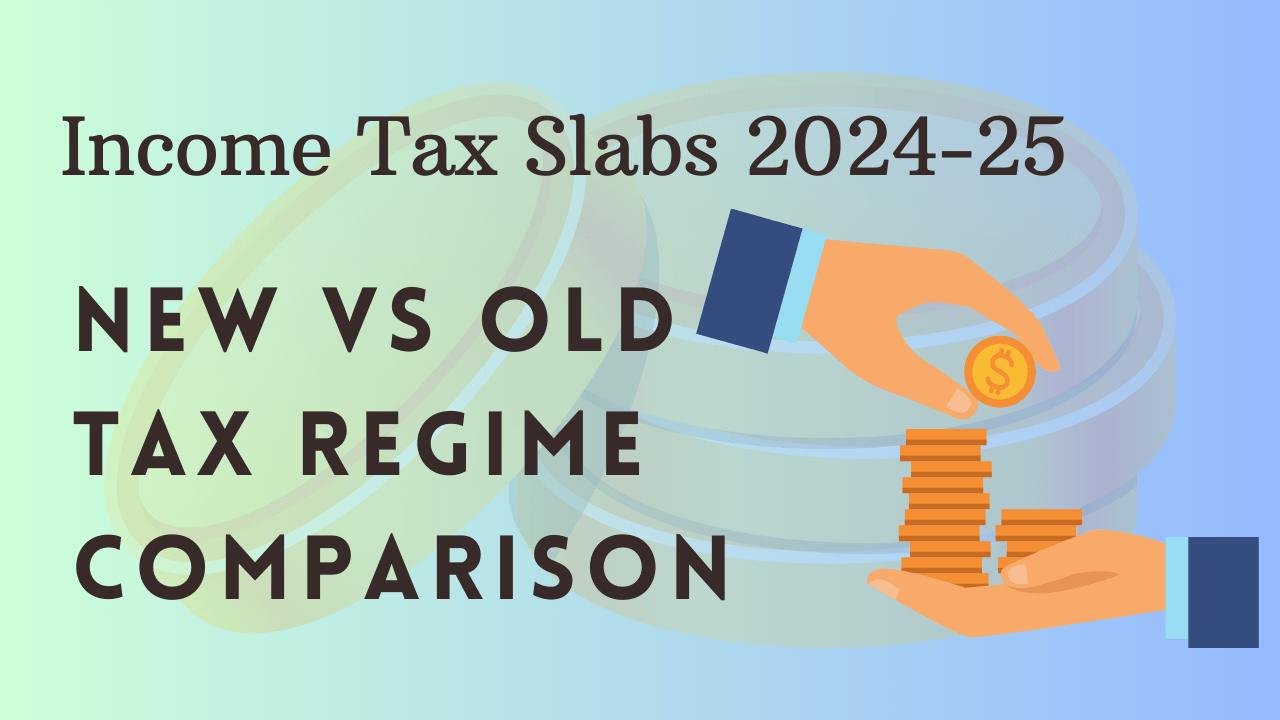In the realm of personal finance, understanding income tax slabs is crucial for efficient tax planning and compliance. As we step into the assessment year 2024-25, it becomes paramount to grasp the intricacies of the tax regime in India. In this blog post, we'll delve into the income tax slabs for the assessment year 2024-25, comparing the tax rates under the new and old tax regimes.
Introduction
Income tax slabs delineate the progressive tax structure that governs the taxation of individuals based on their income levels. These slabs categorize taxpayers into different brackets, each with its own corresponding tax rate.
For the assessment year 2024-25, understanding these slabs is essential for taxpayers to fulfill their tax obligations efficiently. The Income-tax Act, 1961 makes it mandatory for a taxpayer to file an income tax return under various scenarios.
What are Income Tax Slabs?
Definition: Income tax slabs are predetermined income brackets that dictate the rate at which individuals are taxed based on their earnings.
- How They Work: Taxpayers falling within different income brackets are subject to different tax rates, with higher earners facing higher tax percentages.
- Significance: Knowing one's income tax slab aids in effective tax planning, allowing individuals to optimize their finances and minimize tax liabilities.
Tax Slab in India: Assessment Year 2024-2025
For the assessment year 2024-25, the income tax slabs in India witness certain adjustments and updates compared to previous years. Let's break down the tax rates for different income brackets:
| Income Range (in INR) | Tax Rate (%) |
|---|---|
| Up to 2,50,000 | Nil |
| 2,50,001 - 5,00,000 | 5 |
| 5,00,001 - 10,00,000 | 10 |
| 10,00,001 - 12,50,000 | 20 |
| Above 12,50,000 | 30 |
- Changes from Previous Years: It's important to note any alterations or revisions in the tax slabs compared to the preceding fiscal year.
- Keyword Inclusion: Incorporating relevant keywords such as "Income tax slab" and "Assessment year 2024-2025" optimizes the blog's search engine visibility.
Key Considerations for Taxpayers
When deciding between the new and old tax regimes for the assessment year 2024-25, several factors come into play:
- Income Levels: Consider your income levels and how they align with the tax rates under each regime.
- Investments and Expenses: Evaluate your investments and expenses to determine the impact on your taxable income and potential deductions.
- Tax Planning: Engage in proactive tax planning to optimize tax savings and minimize liabilities under either regime.
- Consultation: Seek advice from tax professionals to gain insights tailored to your specific financial circumstances.
Comparison of Tax Rates: New Tax Regime vs. Old Tax Regime
New Tax Regime
- Overview: The new tax regime introduced alternative tax rates with reduced tax deductions and exemptions.
- Tax Rates: The tax rates under the new regime are generally lower, aimed at simplifying the tax structure and reducing compliance burden.
- Pros: Offers simplicity and lower tax rates for some taxpayers, especially those with limited deductions.
- Cons: Reduced scope for claiming deductions and exemptions may not be advantageous for all taxpayers, particularly those with significant investments and expenses.
Old Tax Regime
- Overview: The old tax regime follows the traditional tax structure with multiple deductions and exemptions.
- Tax Rates: Tax rates under the old regime may vary depending on the deductions claimed by the taxpayer.
- Pros: Provides opportunities for taxpayers to avail various deductions and exemptions, thereby reducing their taxable income.
- Cons: Complexity in tax planning and compliance due to numerous deductions and exemptions.
Frequently Asked Questions (FAQs)
What are the major differences between the new and old tax regimes?
The new regime offers lower tax rates with limited deductions, while the old regime provides numerous deductions and exemptions.
Which tax regime is more beneficial for me?
The answer depends on individual circumstances, including income levels, investments, and expenses. Consulting with a tax professional is advisable for personalized advice.
Can I switch between tax regimes?
Yes, taxpayers have the flexibility to switch between the new and old tax regimes based on their preferences and financial situations.
How do I calculate my tax liability under each regime?
Tax liability can be calculated based on the applicable tax rates and deductions/exemptions claimed under the chosen regime.
Are there any deductions or exemptions available under both regimes?
Yes, certain deductions and exemptions are applicable under both regimes, while others may be exclusive to either the new or old regime.
Key Considerations for Taxpayers
- Factors to Consider: When choosing between tax regimes, taxpayers should consider their income levels, investment portfolio, and eligibility for deductions/exemptions.
- Tax Planning: Effective tax planning is essential for optimizing tax savings and minimizing liabilities under either regime.
- Consultation: Seeking advice from tax professionals can provide valuable insights and guidance in navigating the tax landscape.
Conclusion
As we navigate through the assessment year 2024-25, understanding income tax slabs and the nuances of the tax regime is indispensable for every taxpayer. Whether opting for the new tax regime with simplified tax rates or sticking to the old regime with its plethora of deductions, informed decision-making is key.
We encourage readers to delve deeper into their tax obligations and seek professional advice if needed. Your insights and experiences are invaluable – feel free to share them in the comments below!
This blog post offers a comprehensive overview of income tax slabs for the assessment year 2024-25, comparing tax rates under the new and old tax regimes. Understanding these concepts is crucial for effective tax planning and compliance. If you found this post helpful, don't hesitate to share it with others!




Write a comment